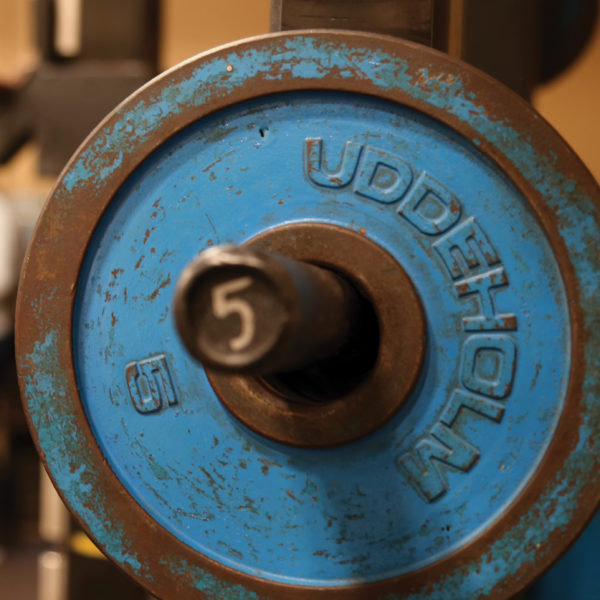As the clock struck noon, UT staff and faculty members exchanged their professional clothing for spandex and cotton, something better suited for a workout. One by one, they poured into Lisa Lowe’s classroom where she had already arranged their equipment and music for the session. At first, the participants independently warmed up by walking around the gym room, stretching and hanging around until the aerobic lessons began. The blowing fans and air conditioner froze the room temperature, which didn’t last very long. All the movement produced enough heat to warm the room, not just individual bodies.
Throughout the class, Lowe encouraged her students by approaching participants when she noticed some form of struggle. One man had a knee injury, which Lowe was aware of, so she helped him work around the issue instead of letting him quit. The coach went around the gym group by group, handed out high fives, demonstrated moves and kept everyone motivated.
Get FIT, the UT exercise program where Lowe coaches, was created 10 years ago to provide busy UT staff and faculty members easy access to workouts and health regimes. When Get FIT noticed participant interest increase, they expanded the program from one class time at noon to 14 class times every day of the work week.
“Our biggest thing, it’s trying to see what barriers are for people who are unable to exercise,” said Rachel Watson, the program’s coordinator and operations director. “[The] biggest one is ‘I don’t have the time,’ so we know that’s everyone’s issue.” Watson hopes the location of the program will help alleviate this concern. The workouts take place in the L. Theo Bellmont Hall (BEL), a recreational building attached to the Darrell K Royal–Texas Memorial Stadium. “It’s on campus, so it’s at your work area, and now it’s just making it a priority.”
Participants in the program come from different backgrounds with varying ages and exercise goals. Throughout the years, Watson has had people tell her how this program has transformed their lifestyles. For example, one participant found that training in the program allowed him to get down to scrub and clean his bathtub. She says that people sometimes think that exercise goals are just a means of weight loss, but that’s not always the case.
“You think people are like ‘yeah, I want to lose 5 pounds, I want to lose 10 pounds,’ no, something is deeper,” Watson said. “It’s literally moving, like being able to go up the stairs and not having to huff and puff. Someone that started the program in our Start FIT, which is a program that’s less than eight people, and it’s people that are severely overweight, never exercise or they’re kind of anxious with too many people. One of their goals was to just be able to tie their shoes.”
Mark Corry, senior systems administrator, has his own reason to exercise. Corry has been in the program for eight years and counting. He can now run half marathons. He attributes his abilities to all the work he has done in Get FIT.
“They keep challenging me. I’m a lot fitter, stronger, I can ride my bike and run and all sorts of stuff I couldn’t do before,” Corry said.
But fitness and location accessibility aren’t the only upsides of the program. Besides providing three days of training with choices of cardio-aerobics, weight lifting and days with a mix of the two, participants work with a dietitian on individual nutritional needs. When it comes to nutrition, Watson believes that the notion of 80/20 — 80 percent nutrition and 20 percent fitness — ought to be 90/10.
Get FIT also provides a check-up scan under the Dexa machine, which maps body-fat and muscle composition. Participants undergo an initial scan at the beginning of the semester and another at the end to witness the transformations made after the 36 classes. Watson said that someone might not see a big fluctuation in what the scale says, but they notice the difference when they see the Dexa machine results.
“It’s eye opening when it shows you what you’ve done and what the real numbers are,” Corry said. “It gives you a way to keep track.”
The program isn’t limited to three designated days of exercise. They’ve begun offering stretching classes that help with flexibility, balance and proprioception.
Get FIT has also expanded. They now offer classes at the J.J. Pickle Research Campus, and Watson hopes to keep expanding.
“Maybe in the future, too, we would be able to hit businesses,” Watson said. “Small business would be my focus, tech people, or people that just sit all day that just need a break within their day. That would be the future that I would see with Get FIT going outside of UT.”
This story originally appeared in Texas Connect, a publication for staff and faculty, January 30, 2019.



